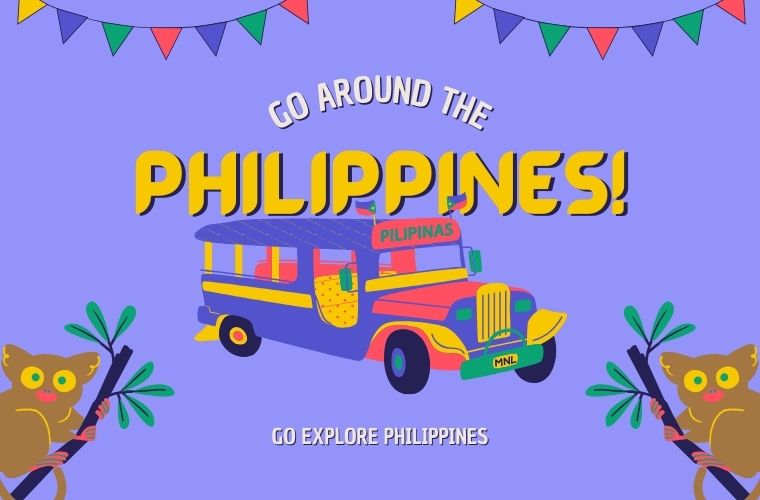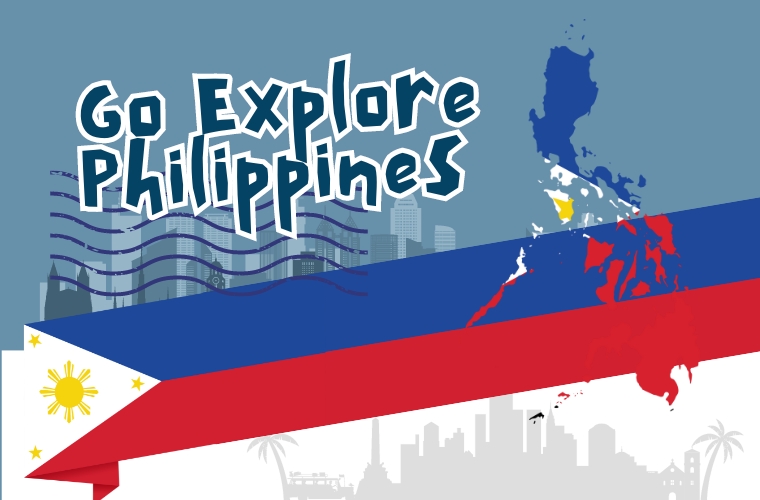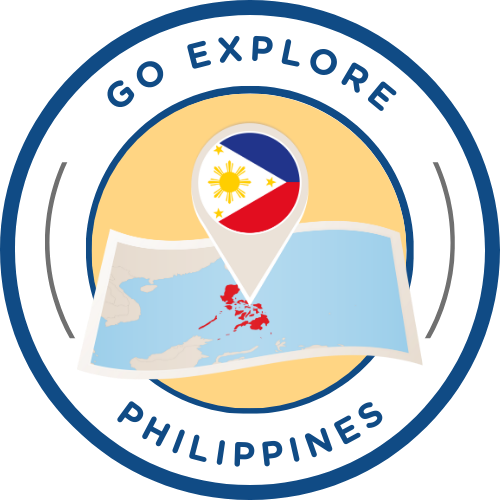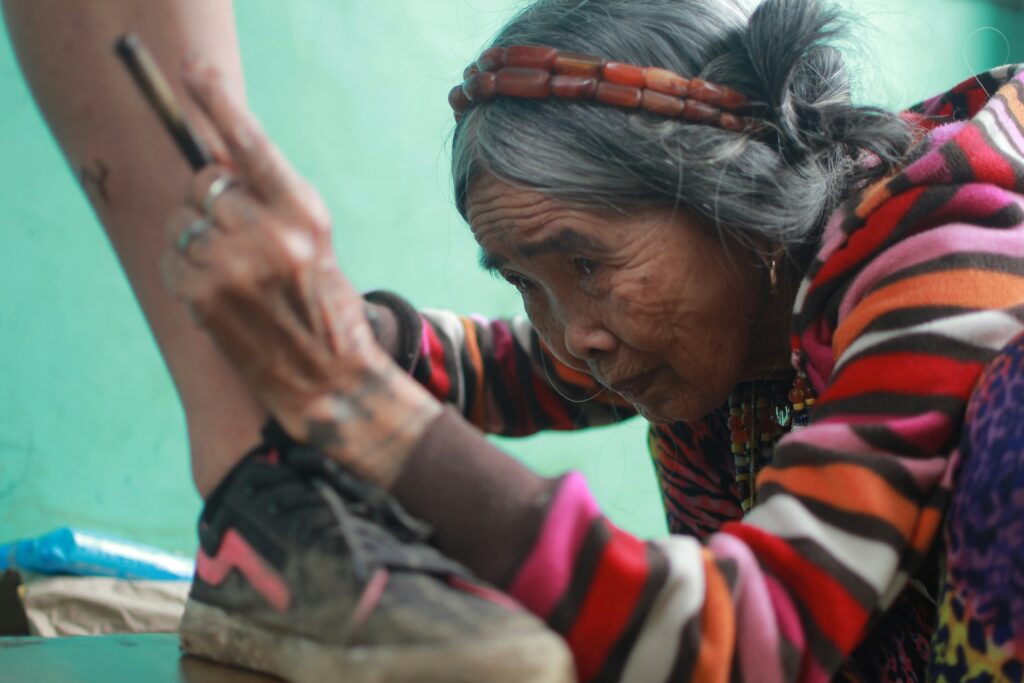
Map Of The Philippines: The Best Map in the World, Explore Now
Posted in Adventure, Culture, Destinations, Food, Travel, Travel Tips
Introduction to the Philippines

The Philippines, an archipelago in Southeast Asia, is a treasure trove of natural beauty, cultural richness, and historical depth. Nestled in the western Pacific Ocean, the country comprises over 7,000 islands, each offering a distinct charm and unique experiences. The geographical diversity of the Philippines is striking, ranging from white sandy beaches and crystal-clear waters to lush mountains and vibrant urban landscapes.
The cultural fabric of the Philippines is equally diverse. Influenced by a melange of Malay, Spanish, American, and indigenous cultures, the country boasts a unique heritage. The Spanish colonial period, lasting more than three centuries, has left a lasting imprint on the nation’s architecture, language, and traditions. Additionally, American influence is evident in the widespread use of English and various aspects of modern Filipino life.
One of the most remarkable features of the Philippines is its rich tapestry of festivals, culinary delights, and traditional crafts. The vibrant fiestas, which celebrate everything from religious events to local harvests, are a testament to the joyous spirit of the Filipino people. Filipino cuisine, with its bold flavors and inventive use of local ingredients, offers a culinary journey that is both exciting and satisfying.
Filipino hospitality, often referred to as ‘Filipino hospitality,’ is renowned worldwide. Visitors to the Philippines are often touched by the genuine warmth and friendliness of the locals. This welcoming nature is deeply embedded in the Filipino culture, ensuring that travelers feel at home and well cared for throughout their stay.
With its diverse attractions, from the bustling streets of Manila to the serene shores of Palawan, the Philippines promises an unforgettable adventure. Whether you’re exploring a detailed map of the Philippines to navigate its myriad islands or immersing yourself in its rich cultural heritage, this Southeast Asian gem offers something for every traveler.
Map Of The Philippines: Important Travel Information
When planning a trip to the Philippines, understanding essential travel information is crucial to ensure a smooth and enjoyable journey. To begin with, most travelers will need to secure a visa before entering the country. Citizens of certain countries may be eligible for a visa-free entry or visa-on-arrival, allowing stays of up to 30 days. Always check the latest visa requirements and regulations from the Philippine Embassy or Consulate in your country of residence.
The best time to visit the Philippines is during the dry season, which spans from November to April. This period offers favorable weather conditions, ideal for exploring the beautiful beaches, islands, and other natural attractions the country has to offer. The dry season also coincides with various local festivals, providing a rich cultural experience for visitors.
The Philippines is accessible via several main entry points, with Ninoy Aquino International Airport (NAIA) in Manila and Mactan-Cebu International Airport serving as the primary international gateways. NAIA, located in the capital city, Manila, is the busiest airport in the country, while Mactan-Cebu International Airport is situated in the Visayas region, offering a convenient entry for travelers heading to central and southern parts of the archipelago.
The local currency in the Philippines is the Philippine Peso (PHP). It is advisable to exchange your currency to pesos upon arrival, as it is widely accepted for transactions. ATMs and currency exchange services are available at major airports, banks, and commercial centers. While credit and debit cards are accepted in urban areas, having some cash on hand is recommended for transactions in rural regions.
The official languages of the Philippines are Filipino and English. English is widely spoken and understood, making communication relatively easy for international travelers. Signage and official documents are often available in both languages, further easing navigation and interaction throughout your trip.
The Philippines operates on Philippine Standard Time (PST), which is 8 hours ahead of Coordinated Universal Time (UTC+8). When planning your itinerary, be mindful of the time difference to coordinate flights, accommodations, and activities seamlessly.
Map Of The Philippines: Must-Visit Destinations
The Philippines, an archipelago of over 7,000 islands, offers a diverse range of destinations, each teeming with unique attractions and experiences. A map of the Philippines reveals a treasure trove of must-visit spots that cater to various interests, from pristine beaches to historical landmarks.
Boracay, renowned for its powdery white sand beaches, stands out as a quintessential tropical paradise. White Beach, stretching over four kilometers, is the island’s most famous feature, where azure waters meet vibrant nightlife and a plethora of water activities.
Palawan, often hailed as the last frontier of the Philippines, boasts stunning islands and lagoons. The province is home to El Nido and Coron, where dramatic limestone cliffs, crystal-clear waters, and hidden lagoons offer unparalleled beauty. The underground river in Puerto Princesa, a UNESCO World Heritage Site, is another highlight, showcasing an impressive subterranean landscape.
Cebu, a historical and cultural hub, offers a blend of modernity and tradition. The island is famous for its historical sites such as Magellan’s Cross and the Basilica del Santo Niño. Additionally, Cebu’s waters are a diver’s paradise with spots like Moalboal and Malapascua Island, where thresher sharks can be spotted.
Manila, the bustling capital, is a melting pot of cultures and a vibrant metropolis. Tourists can explore historic districts like Intramuros, the walled city that dates back to Spanish colonial times. Modern attractions include sprawling malls, eclectic dining scenes, and lively entertainment hubs that reflect the city’s dynamic character.
Beyond these well-known destinations, the Philippines offers other unique landscapes and cultural wonders. Bohol’s Chocolate Hills, a geological formation of over 1,200 hills that turn brown in the dry season, is a sight to behold. The Banaue Rice Terraces in Ifugao, carved into the mountains over 2,000 years ago, are testament to the ingenuity of the indigenous people and provide breathtaking views.
Each of these destinations, pinpointed on a map of the Philippines, presents its own allure, promising unforgettable experiences for travelers seeking both adventure and relaxation.
Transportation and Getting Around
Exploring the Philippines, an archipelago known for its diverse landscapes, requires understanding the available modes of transportation to navigate the islands efficiently. The map of the Philippines highlights the extensive network of transport options that cater to both inter-island and intra-island travel.
Firstly, domestic flights are a popular and time-efficient way to travel between the major islands. The country boasts several airlines offering frequent flights connecting key cities such as Manila, Cebu, and Davao. Booking tickets in advance, especially during peak travel seasons, can secure the best fares and ensure availability. Additionally, smaller airports on less-traveled islands also offer flights, albeit less frequently.
Ferries are another vital component of the transportation system, providing an essential link between islands. Numerous ferry operators run services ranging from fast crafts to larger roll-on/roll-off (RoRo) vessels that carry both passengers and vehicles. For a smooth journey, it is advisable to check schedules and book tickets ahead of time, particularly for popular routes.
On the mainland, buses are the backbone of long-distance travel, connecting cities and towns across the various islands. Major bus companies offer comfortable, air-conditioned buses for overnight and long-haul journeys. Purchasing tickets in advance is recommended, especially on weekends and holidays, to avoid last-minute inconveniences.
Local transport options are plentiful and varied, with jeepneys, tricycles, and taxis dominating the scene. Jeepneys, iconic to the Philippines, are an affordable and colorful way to get around cities and rural areas. Tricycles, essentially motorcycle sidecars, are ideal for short distances and navigating narrower roads. Taxis are widely available in urban areas, and ride-hailing apps like Grab provide a convenient alternative, offering both standard and premium car services.
Navigating the transport system in the Philippines can be straightforward with a bit of preparation. Utilizing a map of the Philippines to plan routes and understanding the local transport options will enhance your travel experience, allowing you to explore this beautiful archipelago with ease and confidence.
Accommodation Options
When planning a trip to the Philippines, understanding the diverse accommodation options available is crucial for a delightful experience. The country offers a wide array of lodging choices, catering to various budgets and preferences. From opulent luxury resorts to economical hostels, travelers can find an ideal place to stay that aligns with their needs and desires.
For those seeking luxury, the Philippines boasts numerous high-end resorts, particularly in popular tourist destinations such as Boracay, Palawan, and Cebu. These resorts offer world-class amenities, including private beaches, gourmet dining, and spa services, providing an unparalleled level of comfort and indulgence. In contrast, budget-conscious travelers can opt for hostels or guesthouses, which are plentiful in urban areas and tourist hotspots. These establishments provide basic amenities and a cozy atmosphere at a fraction of the cost.
In addition to standard hotels and hostels, the Philippines is renowned for its unique accommodation options. Beachfront cottages, often found on the picturesque islands, offer stunning ocean views and direct access to the beach. Eco-friendly lodges, scattered across the archipelago, provide an environmentally sustainable stay, often set in lush, natural surroundings. Traditional nipa huts, made from bamboo and palm leaves, offer a rustic and culturally immersive experience, particularly in rural areas and less commercialized islands.
When selecting accommodation, several factors should be considered to ensure a pleasant stay. The location is paramount; proximity to tourist attractions, transportation hubs, and local amenities can significantly enhance the convenience and enjoyment of your trip. It is also essential to evaluate the amenities offered by the accommodation, such as Wi-Fi, air conditioning, and breakfast services, to meet your specific needs. Lastly, guest reviews can provide valuable insights into the quality of service and overall experience, helping you make an informed decision.
By considering these factors and exploring the diverse options available, you can find the perfect place to stay while exploring the beautiful map of the Philippines.
Local Cuisine and Dining Tips
Exploring the Philippines offers an incredible opportunity to immerse oneself in a rich culinary heritage. Filipino cuisine is a vibrant tapestry of flavors, influenced by a myriad of cultural and historical factors. Among the must-try dishes is adobo, a savory stew typically made with chicken or pork marinated in vinegar, soy sauce, and spices. Another staple is sinigang, a sour soup often cooked with pork, shrimp, or fish, and flavored with tamarind or other souring agents.
No culinary journey in the Philippines would be complete without tasting lechon, a whole roasted pig known for its crispy skin and tender meat, often served during festive occasions. For dessert, halo-halo is a popular choice, a colorful mix of shaved ice, sweetened beans, fruits, and other ingredients, topped with a scoop of ice cream.
For those seeking a more adventurous experience, Filipino street food offers an array of unique flavors. Sampling balut—a fertilized duck egg—or isaw—grilled chicken intestines—can provide an authentic taste of local culture. Street vendors can be found throughout the country, especially in bustling markets and night bazaars.
When dining in the Philippines, understanding local etiquette can enhance the experience. Filipinos often eat with a fork and spoon, using the spoon to scoop food and the fork to push it. Sharing food is a common practice, reflecting the communal nature of Filipino society.
To find the best local eateries, consider exploring beyond tourist areas. Asking locals for recommendations can lead to hidden gems where traditional dishes are prepared with care and authenticity. Urban areas, particularly in cities like Manila and Cebu, have seen a rise in Filipino fusion cuisine, blending traditional flavors with modern culinary techniques.
While street food offers a delightful culinary adventure, it is essential to exercise caution. Opt for stalls with high turnover to ensure ingredients are fresh, and observe the hygiene practices of vendors. By following these tips, travelers can safely and enjoyably navigate the diverse and delicious landscape of Filipino cuisine.
Cultural Etiquette and Safety Tips
The Philippines is a vibrant nation with a rich cultural tapestry, and understanding its norms and etiquette can significantly enhance your travel experience. When exploring the archipelago, it is essential to be mindful of local customs and traditions. Filipinos are known for their hospitality, and showing respect can go a long way in building positive interactions.
In public places, it is advisable to dress modestly, particularly when visiting religious sites or rural areas. Wearing lightweight, breathable clothing is ideal due to the tropical climate, but ensure that your attire is respectful. Public displays of affection are generally frowned upon, so it is best to keep physical affection to a minimum in such settings.
Social courtesies in the Philippines often include a warm smile and a friendly greeting. A common gesture of respect is the “mano” or “bless,” where younger individuals take the hand of an elder and press it to their forehead. This act is a sign of reverence and is deeply ingrained in Filipino culture. Additionally, using polite language and addressing people with titles such as “Sir,” “Ma’am,” “Kuya” (older brother), or “Ate” (older sister) is appreciated.
Safety is a paramount concern for travelers. The Philippines, while generally safe, requires vigilance, especially in crowded areas like markets and public transportation hubs. Keep your valuables secure and be wary of pickpockets. It is advisable to use registered taxis or ride-sharing services, particularly in urban areas.
Given the Philippines‘ geographical location, it is also crucial to stay informed about weather conditions, especially during the typhoon season, which typically spans from June to November. Keep an eye on local news and heed any advisories or warnings issued by authorities.
Respecting local customs and traditions is vital. For instance, when visiting indigenous communities, seek permission before taking photographs and engage with the community respectfully. Understanding these aspects will not only ensure a smoother journey but also foster a deeper appreciation for the diverse cultures mapped across the Philippines.
Map of the Philippines
The map of the Philippines is an indispensable tool for anyone looking to explore this diverse and beautiful archipelago. Comprising over 7,000 islands, the Philippines offers a myriad of destinations, each with its unique charm. To begin your journey, a good understanding of the major islands and cities is crucial. The three primary island groups are Luzon, Visayas, and Mindanao. Luzon is home to the bustling capital city, Manila, and the picturesque highlands of Baguio. The Visayas region includes famous tourist spots like Cebu City and the pristine beaches of Boracay. In Mindanao, you’ll find the vibrant city of Davao and the stunning landscapes of Siargao.
When planning your travel itinerary, the map of the Philippines can help you gauge distances between key locations. For instance, the distance between Manila in Luzon and Cebu City in the Visayas is approximately 570 kilometers. To travel from Manila to Davao in Mindanao, you’ll cover around 960 kilometers. Understanding these distances can assist in planning your travel routes, whether you opt for domestic flights, ferry services, or overland journeys. Major tourist destinations like Palawan, known for its crystal-clear waters and limestone cliffs, are often best reached by air, given their remote locations.
To make the most of your trip, detailed maps and travel guides are invaluable. Online resources such as Google Maps and travel forums provide up-to-date information on routes, travel times, and points of interest. For those who prefer offline resources, printed maps and guidebooks are available at bookstores and travel agencies. The Department of Tourism in the Philippines also offers comprehensive travel guides and maps, which can be accessed through their official website or at their offices in key cities.
Using a well-detailed map of the Philippines, you can craft a travel itinerary that ensures you experience the best of what the country has to offer. Whether you are island-hopping, exploring urban centers, or seeking out hidden gems, a reliable map will be your guide in navigating this enchanting destination.

Go Explore Philippines
Welcome to GoExplorePhilippines.com, your go-to guide for exploring the Philippines. Discover tips, travel guides, and stories about the stunning landscapes, vibrant culture, and delicious cuisine of Luzon, Visayas, Mindanao, and beyond. Join us on an adventure to uncover the hidden gems of the Philippines!











